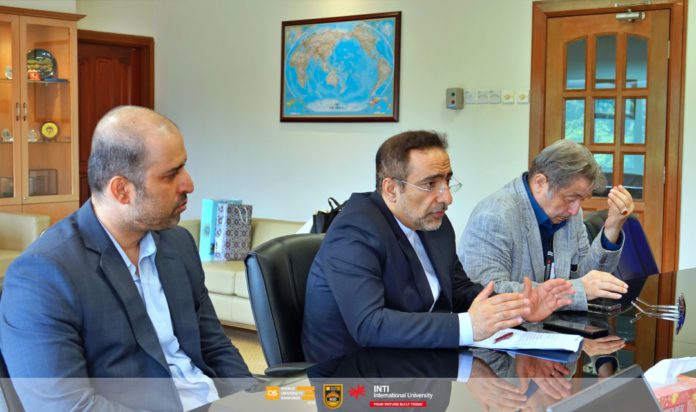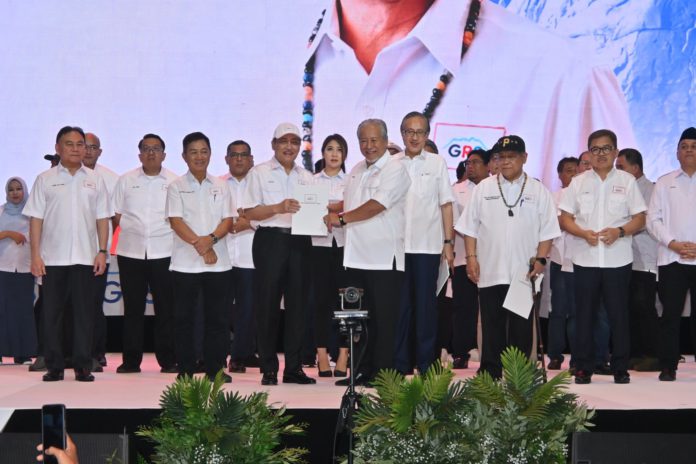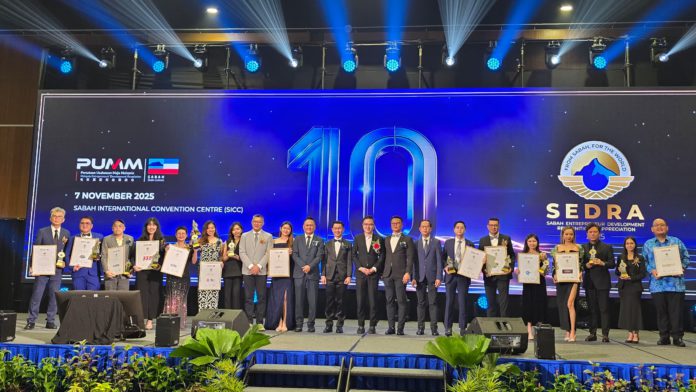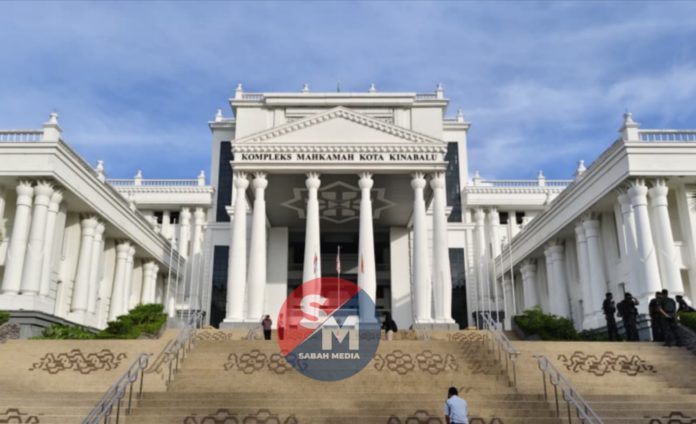By JAMES LEONG
Dr Mohsen Saraf is the Scientific and Technological Counsellor of Islamic Republic of Iran in Malaysia, Southeast and Oceania, overseeing Iranian students in Southeast Asia and the Pacific region.

He has been based in Malaysia for about a year. His role involves fostering scientific and technological collaboration between Iran and the countries in our mission region.
This includes liaising with institutes, universities, research centers, and government organizations responsible for education and research.
Trade and Commerce
When discussing trade and commerce, it’s essential to first address and correct the perceptions and mutual understanding between our nations.
Over the past decade, we have conducted more than 30,000 interviews in Malaysia, allowing me to become well-acquainted with the characteristics of this country.
However, there remains a significant need for the Malaysian people, government, and leaders to gain a deeper and more accurate understanding of Iran.
Correcting misconceptions requires increased travel, student and professor exchanges, and the organization of cultural, religious, scientific, and commercial events.
We believe that economic exchanges between our countries could reach several tens of billions of dollars due to our many cultural similarities.
However, some of our global and regional competitors are deliberately obstructing this strategic relationship through propaganda and influencing certain institutions.
As of 2022, the trade exchange between Malaysia and Iran amounted to approximately RM3.68 billion (about USD 790 million), reflecting a significant increase of 40.2% from the previous year.
This trade primarily includes Malaysia’s exports of palm oil, other vegetable oils, and rubber to Iran, and Iran’s exports of mollusks, tropical fruits, and precious metal scraps to Malaysia.
To further expand their economic relationship, Malaysia and Iran can explore several key areas of cooperation:
Energy Sector
Given Iran’s significant oil and gas reserves, Malaysia can benefit from stable energy supplies through long-term agreements.
Malaysia’s expertise in oil and gas technology can also be beneficial for Iran’s energy sector, fostering joint ventures and technology transfers.
Petrochemicals: Both countries can collaborate in the petrochemical industry. Iran’s vast hydrocarbon resources and Malaysia’s advanced petrochemical technology can lead to the establishment of joint petrochemical plants and refineries.
Agriculture and Food Security: Malaysia can increase its import of agricultural products such as tropical fruits, nuts, and spices from Iran, while exporting palm oil and rubber.
Collaborating on food security initiatives and agricultural technology can benefit both nations. We have a concrete plan to expand scientific and technical cooperation with Malaysian states that show growth potential, such as Sabah and Sarawak.
Based on our research, we see the opportunity for a strong agricultural partnership with these states in the following areas:
Research and Development (R&D) Collaboration Joint Research Projects:
▲Joint Research Projects: Establishing joint research programs focusing on areas like precision agriculture, sustainable farming practices, crop biotechnology, and climate-resilient agriculture.
▲Innovation Hubs: Creating joint innovation hubs or centers dedicated to agricultural technology where researchers from both countries can collaborate on cutting-edge projects.
Technology Transfer and Knowledge Sharing
▲Exchange Programs: Facilitating exchange programs for scientists, researchers, and students to share knowledge and best practices in advanced agricultural technologies.
▲Workshops and Conferences: Organizing international workshops, seminars, and conferences to discuss the latest trends and advancements in agriculture technology.
Sustainable Farming Practices
▲Organic Farming: Promoting the adoption of organic farming techniques and sharing best practices for sustainable agriculture.
▲Water Management: Collaborating on efficient water management systems and technologies, crucial for both countries’ agricultural sectors.
Precision Agriculture
▲IOT and Sensors: Implementing Internet of Things (IoT) devices and sensors in farms to monitor crop health, soil conditions, and weather patterns for optimized farming.
▲Data Analytics: Using big data and analytics to enhance decision-making in farming practices, improving crop yields and reducing waste.
Biotechnology and Genetic Engineering
▲Crop Improvement: Collaborating on genetic engineering and biotechnology projects to develop high-yield, pest-resistant, and climate-resilient crop varieties.
▲Bio-fertilizers and Bio-pesticides: Researching and developing bio-fertilizers and bio-pesticides to promote eco-friendly farming.
Mechanization and Automation
▲Sharing advancements in agricultural machinery and automation to increase efficiency and productivity in farming.
▲Robotics: Exploring the use of robotics in agriculture for tasks such as planting, harvesting, and monitoring crop health.
Smart Farming Solutions
▲Drones: Utilizing drones for aerial surveying, crop monitoring, and precision application of fertilizers and pesticides.
▲Smart Irrigation Systems: Developing and implementing smart irrigation systems that optimize water usage based on real-time data.
Educational Partnerships
▲Dual Degree Programs: Establishing dual degree programs in agricultural sciences and technology between universities in Iran and Malaysia.
▲Online Courses and Training: Offering online courses and training programs in advanced agricultural technologies to farmers and professionals from both countries.
Public-Private Partnerships
▲Investment Opportunities: Encouraging private sector investments in agriculture technology projects in both countries.
▲Startup Ecosystem: Supporting the startup ecosystem by providing funding, mentorship, and market access to agri-tech startups from Iran and Malaysia.
Policy and Regulatory Framework
▲Harmonized Standards: Working towards harmonizing agricultural standards and regulations to facilitate easier collaboration and technology transfer.
▲Supportive Policies: Developing policies that support innovation, research, and investment in advanced agriculture technologies
I believe that by leveraging these collaborative efforts, Iran and Malaysia can enhance their agricultural productivity, sustainability, and resilience, benefiting both countries’ economies and food security.
Tourism and Hospitality: Promoting tourism between the two countries can enhance cultural ties and economic benefits. Iran’s historical sites and Malaysia’s renowned hospitality industry can attract tourists from both nations.
Education and Research: Strengthening academic exchanges and collaborative research can foster innovation. Universities from both countries can partner in fields like engineering, medicine, and environmental science, facilitating student and faculty exchanges and joint research projects.
Manufacturing and Industrial Cooperation: Both nations can collaborate in the automotive and electronics industries. Malaysia’s advanced manufacturing capabilities and Iran’s growing market can create opportunities for joint ventures and increased trade in manufactured goods.
Halal Industry: Both Malaysia and Iran, as Muslim-majority countries, have a strong interest in the halal industry. Collaborating in halal food production, certification, and halal tourism can cater to the global Muslim population, expanding market reach.
Information and Communication Technology (ICT)
Enhancing cooperation in ICT can lead to mutual benefits. Malaysia’s advanced ICT infrastructure and Iran’s growing tech-savvy population can pave the way for joint ventures in software development, cybersecurity, and digital economy initiatives.
By exploring these areas, Malaysia and Iran can strengthen their economic ties, benefiting from each other’s strengths and fostering sustainable economic growth. – By Sandakan Media Association (Pemassa) Chairman James Leong




